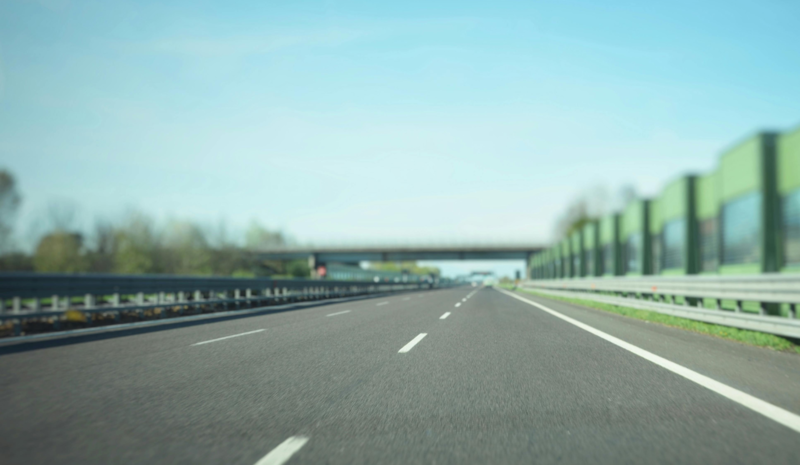Home
About University
News
Asphalt Revolution: Scientists Develop Road Surfaces to Reduce Pollution and Fuel Consumption

2025-02-21
Asphalt Revolution: Scientists Develop Road Surfaces to Reduce Pollution and Fuel Consumption
When looking at Earth from an airplane, cities are easily recognized by their network of roads, which spread like arteries across inhabited areas. These vast asphalt surfaces are traveled daily by thousands of vehicles, emitting carbon dioxide, while the asphalt itself is made using petroleum products that do not contribute to sustainability. As residential areas expand, the road network will only grow. That is why science is already searching for solutions for the future of road infrastructure.
"We are developing next-generation asphalt surfaces that will generate less CO2, contribute to climate neutrality, and save fuel costs," says Dr. Judita Škulteckė, senior researcher at the VILNIUS TECH Road Research Institute and project leader in the "Smart and Climate-Neutral Lithuania" mission, during the Innovation Agency podcast "Future Architects."
The Transport Sector – One of the Biggest Polluters
Teresa Škutaitė, head of the GreenTech Hub at the Innovation Agency, highlights that although roads are the "arteries" of our cities, the entire transport sector remains one of the major contributors to greenhouse gas emissions.
Dr. J. Škulteckė jokes that if we wanted to completely solve today's problems, the first thought that comes to mind is teleportation: "We wouldn’t need roads or anything else—we would just appear somewhere as soon as we thought about it. Imagine how much emissions we would save!" she laughs.
Unfortunately, this is not yet possible, but she explains that for many years, researchers have been developing much more realistic solutions that could revolutionize road infrastructure in the future.
Scientists are focusing both on developing new materials and improving testing methods that allow for quicker evaluation and implementation of new materials. "We can already test small samples and predict how asphalt surfaces will perform in real conditions. If these research methods continue to advance, we may no longer need to build experimental roads to observe how the pavement will look after 20 years," says Dr. J. Škulteckė.
Road Surfaces Are More Than Just Asphalt Layers
Scientists note that sustainability efforts must consider multiple factors, including solutions that integrate other industries. One key approach involves using construction and other waste materials to create sustainable road infrastructure.
Dr. J. Škulteckė explains that even with proper waste sorting, some municipal waste still ends up in landfills or is incinerated for energy production. However, waste incineration produces ash and slag. While incineration generates energy, it also creates another type of waste. Researchers are working on ways to repurpose this byproduct. In particular, slag produced during waste incineration can be used for building roads and bicycle paths.
She also clarifies a common misconception: roads are not just a single layer of asphalt. "Think of a road like a sandwich: it’s not just asphalt. First, there’s the foundation—the soil base, like a house’s foundation. Then, there are layers of sand and crushed stone, followed by the asphalt. Slag can be used instead of sand, but it must meet environmental and technical requirements," explains Dr. J. Škulteckė. This approach contributes to a greener Lithuania.
Recycled Tires Return to the Roads
Dr. Ovidijus Šernas, director of the VILNIUS TECH Road Research Institute, has been researching ways to use recycled tire rubber in sustainable next-generation road surfaces for over a decade. His interest in this topic was driven by the large amount of waste generated annually.
"More than 30,000 tons of tires are discarded each year. In the past, at least half of these were incinerated for energy, meaning they were not reused," explains Dr. O. Šernas.
He is pleased that in Vilnius, two projects have already been completed using recycled tire rubber: a parking lot on Linkmenų Street 28 and the first traffic lane on Rinktinė Street near the "Vilnius Marriott" hotel.
Dr. O. Šernas is also encouraged by the interest from students. One master's student is working on improving asphalt mixtures to make roads safer for cyclists, pedestrians, and athletes by making the surface softer in case of falls.
He acknowledges that some people are skeptical about sustainability and using recycled materials in new projects. However, he reassures that there is no reason to worry. "Recycled materials should not be seen as weak or inferior. In most cases, 100% recycled materials are not used. Instead, various materials are combined in scientifically tested proportions to ensure quality and durability," emphasizes Dr. O. Šernas.
Next-Generation Asphalt Will Protect the Planet and Reduce Fuel Consumption
Scientists are developing solutions not just for today but for future generations. "We are making a change. We want to show that infrastructure can be sustainable, long-lasting, and environmentally friendly. Our goal is to build roads today that future generations can use while recognizing our efforts and striving to develop even more advanced technologies," says Dr. J. Škulteckė.
She explains that Lithuanian scientists are currently developing next-generation asphalt surfaces with reduced rolling resistance. If implemented across Lithuania, such surfaces would help reduce CO2 emissions, contribute to climate neutrality, and even save money—lower rolling resistance means lower fuel consumption.
Teresa Škutaitė from the Innovation Agency’s GreenTech Hub agrees, adding that the project involves not only innovative developments but also the creation of competence centers that connect science and business for collaborative projects. "One such development includes adapting green hydrogen for use in internal combustion engine vehicles. This is just one example of how we are moving towards sustainability," she says.
Dr. J. Škulteckė also notes that in the future, bio-based binders may become a reality—a significant breakthrough in sustainable road construction. "Asphalt mixtures consist of separate particles that need a binder. Currently, this binder is bitumen, a byproduct of oil refining, which is not environmentally friendly. Scientists are now focused on finding greener alternatives—bio-based binders," she explains.
You can watch the full "Future Architects" podcast on the Innovation Agency’s YouTube channel or listen to it on Spotify.
Original source: Innovation Agency
"We are developing next-generation asphalt surfaces that will generate less CO2, contribute to climate neutrality, and save fuel costs," says Dr. Judita Škulteckė, senior researcher at the VILNIUS TECH Road Research Institute and project leader in the "Smart and Climate-Neutral Lithuania" mission, during the Innovation Agency podcast "Future Architects."
The Transport Sector – One of the Biggest Polluters
Teresa Škutaitė, head of the GreenTech Hub at the Innovation Agency, highlights that although roads are the "arteries" of our cities, the entire transport sector remains one of the major contributors to greenhouse gas emissions.
Dr. J. Škulteckė jokes that if we wanted to completely solve today's problems, the first thought that comes to mind is teleportation: "We wouldn’t need roads or anything else—we would just appear somewhere as soon as we thought about it. Imagine how much emissions we would save!" she laughs.
Unfortunately, this is not yet possible, but she explains that for many years, researchers have been developing much more realistic solutions that could revolutionize road infrastructure in the future.
Scientists are focusing both on developing new materials and improving testing methods that allow for quicker evaluation and implementation of new materials. "We can already test small samples and predict how asphalt surfaces will perform in real conditions. If these research methods continue to advance, we may no longer need to build experimental roads to observe how the pavement will look after 20 years," says Dr. J. Škulteckė.
Road Surfaces Are More Than Just Asphalt Layers
Scientists note that sustainability efforts must consider multiple factors, including solutions that integrate other industries. One key approach involves using construction and other waste materials to create sustainable road infrastructure.
Dr. J. Škulteckė explains that even with proper waste sorting, some municipal waste still ends up in landfills or is incinerated for energy production. However, waste incineration produces ash and slag. While incineration generates energy, it also creates another type of waste. Researchers are working on ways to repurpose this byproduct. In particular, slag produced during waste incineration can be used for building roads and bicycle paths.
She also clarifies a common misconception: roads are not just a single layer of asphalt. "Think of a road like a sandwich: it’s not just asphalt. First, there’s the foundation—the soil base, like a house’s foundation. Then, there are layers of sand and crushed stone, followed by the asphalt. Slag can be used instead of sand, but it must meet environmental and technical requirements," explains Dr. J. Škulteckė. This approach contributes to a greener Lithuania.
Recycled Tires Return to the Roads
Dr. Ovidijus Šernas, director of the VILNIUS TECH Road Research Institute, has been researching ways to use recycled tire rubber in sustainable next-generation road surfaces for over a decade. His interest in this topic was driven by the large amount of waste generated annually.
"More than 30,000 tons of tires are discarded each year. In the past, at least half of these were incinerated for energy, meaning they were not reused," explains Dr. O. Šernas.
He is pleased that in Vilnius, two projects have already been completed using recycled tire rubber: a parking lot on Linkmenų Street 28 and the first traffic lane on Rinktinė Street near the "Vilnius Marriott" hotel.
Dr. O. Šernas is also encouraged by the interest from students. One master's student is working on improving asphalt mixtures to make roads safer for cyclists, pedestrians, and athletes by making the surface softer in case of falls.
He acknowledges that some people are skeptical about sustainability and using recycled materials in new projects. However, he reassures that there is no reason to worry. "Recycled materials should not be seen as weak or inferior. In most cases, 100% recycled materials are not used. Instead, various materials are combined in scientifically tested proportions to ensure quality and durability," emphasizes Dr. O. Šernas.
Next-Generation Asphalt Will Protect the Planet and Reduce Fuel Consumption
Scientists are developing solutions not just for today but for future generations. "We are making a change. We want to show that infrastructure can be sustainable, long-lasting, and environmentally friendly. Our goal is to build roads today that future generations can use while recognizing our efforts and striving to develop even more advanced technologies," says Dr. J. Škulteckė.
She explains that Lithuanian scientists are currently developing next-generation asphalt surfaces with reduced rolling resistance. If implemented across Lithuania, such surfaces would help reduce CO2 emissions, contribute to climate neutrality, and even save money—lower rolling resistance means lower fuel consumption.
Teresa Škutaitė from the Innovation Agency’s GreenTech Hub agrees, adding that the project involves not only innovative developments but also the creation of competence centers that connect science and business for collaborative projects. "One such development includes adapting green hydrogen for use in internal combustion engine vehicles. This is just one example of how we are moving towards sustainability," she says.
Dr. J. Škulteckė also notes that in the future, bio-based binders may become a reality—a significant breakthrough in sustainable road construction. "Asphalt mixtures consist of separate particles that need a binder. Currently, this binder is bitumen, a byproduct of oil refining, which is not environmentally friendly. Scientists are now focused on finding greener alternatives—bio-based binders," she explains.
You can watch the full "Future Architects" podcast on the Innovation Agency’s YouTube channel or listen to it on Spotify.
Original source: Innovation Agency
-
- Page administrators:
- Monika Daukintytė
- Ugnė Daraškevičiūtė
- Monika Daukintytė












